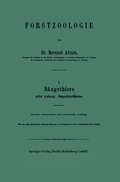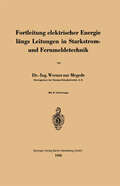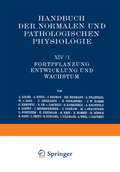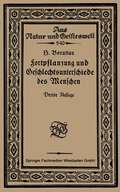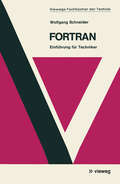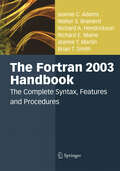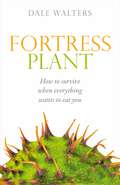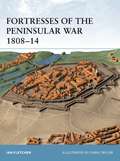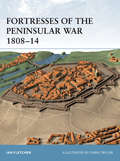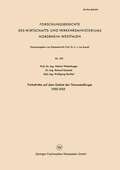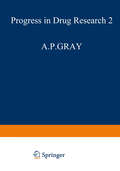- Table View
- List View
Forskolin: Natural Sources, Pharmacology and Biotechnology
by T. PullaiahThis monograph compiles updated information about forskolin, a labdane diterpene that is produced by the Coleus plant. Forskolin has a large number of practical uses and the book delves into the various aspects of this chemical. It includes topics such as the botanical source of forskolin and the cultivation of Coleus forskohlii, source. It also covers the biosynthetic pathways in natural sources and also through different biotechnological applications. Chapters include the potential and products in the Forskolin market. The book also covers the methods for enhanced production of forskolin from natural sources and through tissue culture methods for improvement of the plant for higher content of forskolin. It discusses the role of endophytes in the production of forskolin.The book is useful for students and researchers in the field of botany, pharmacology and biochemistry. It also serves scientists in various pharmaceutical industries.
Forstliche Anbauversuche mit der Metasequoia glyptostroboides im Raum Westfalen (Forschungsberichte des Landes Nordrhein-Westfalen #1932)
by Ernst BurrichterForstliches Adreßbuch sämmtlicher Königlich Preußischen Oberförstereien: einschließlich der Hofkammer- und der Kgl. Prinzlichen Reviere
by Otto MüllerForstliches Rechnen: Ein Übungs- und Aufgabensammlungsbuch für angehende Forstleute
by Fritz JütteDieser Buchtitel ist Teil des Digitalisierungsprojekts Springer Book Archives mit Publikationen, die seit den Anfängen des Verlags von 1842 erschienen sind. Der Verlag stellt mit diesem Archiv Quellen für die historische wie auch die disziplingeschichtliche Forschung zur Verfügung, die jeweils im historischen Kontext betrachtet werden müssen. Dieser Titel erschien in der Zeit vor 1945 und wird daher in seiner zeittypischen politisch-ideologischen Ausrichtung vom Verlag nicht beworben.
Fortleitung elektrischer Energie längs Leitungen in Starkstrom- und Fernmeldetechnik
by W. Zur MegedeFortpflanzung; Entwicklung und Wachstum. 2 Teile. 1926/27 (Handbuch der normalen und pathologischen Physiologie)
by A. Adler A. Biedl I. Broman Rh. Erdmann L. FraenkelDieser Buchtitel ist Teil des Digitalisierungsprojekts Springer Book Archives mit Publikationen, die seit den Anfängen des Verlags von 1842 erschienen sind. Der Verlag stellt mit diesem Archiv Quellen für die historische wie auch die disziplingeschichtliche Forschung zur Verfügung, die jeweils im historischen Kontext betrachtet werden müssen. Dieser Titel erschien in der Zeit vor 1945 und wird daher in seiner zeittypischen politisch-ideologischen Ausrichtung vom Verlag nicht beworben.
Fortpflanzung und Geschlechtsunterschiede des Menschen: Eine Einführung in die Sexualbiologie (Aus Natur und Geisteswelt)
by H. BoruttauDieser Buchtitel ist Teil des Digitalisierungsprojekts Springer Book Archives mit Publikationen, die seit den Anfängen des Verlags von 1842 erschienen sind. Der Verlag stellt mit diesem Archiv Quellen für die historische wie auch die disziplingeschichtliche Forschung zur Verfügung, die jeweils im historischen Kontext betrachtet werden müssen. Dieser Titel erschien in der Zeit vor 1945 und wird daher in seiner zeittypischen politisch-ideologischen Ausrichtung vom Verlag nicht beworben.
Fortpflanzungsmodus und Meiose Apomiktischer Blütenpflanzen (Protoplasmatologia Cell Biology Monographs #6 / F / 3)
by Alfred RutishauserFortran: Einführung für Techniker (Viewegs Fachbücher der Technik)
by Wolfgang SchneiderDie Programmiersprache FORTRAN ist eine mathematisch-naturwissenschaftlich orientierte Programmiersprache. Sie ist vor allem auf die Bedürfnisse von Wissenschaftlern, Ingenieuren und Technikern zugeschnitten. Es ist nicht erforderlich, über elementare Grundkenntnisse in dieser Programmiersprache hinauszugehen, wenn nur gelegentlich Probleme selbstständig zu programmieren sind und es nicht darauf ankommt, wie elegant das Problem programmtechnisch gelöst wird, sondern nur, daß es gelöst wird. Dieses Buch isoliert deshalb bewußt den Teil der Programmiersprache FORTRAN, der unbedingt zur Erstellung von Programmen erforderlich ist. Besonderer Wert wurde auf einprägsame Merksätze, Übungen, Zusammenfassungen und vollkommen durch programmierte Beispiele gelegt. Das Buch wurde vorwiegend für Studierende an Fachschulen Technik und Fachhoch schulen geschrieben. Dr. Wolfgang Schneider In haltsverzei eh n i s 1. Grundlagen der Datenverarbeitung 1.1. Der Begriff der Datenverarbeitung 1.2. Die Arbeitsweise einer Datenverarbeitungsanlage (OVA) 2. Programmiersprachen 3 2.1. Allgemeines 3 2.2. Maschinensprachen 3 2.3. Assemblersprachen 3 2.4. Problemorientierte Programmiersprachen 4 3. Problemaufbereitung und Aufstellung von Programmablaufplänen 5 3.1. Problemaufbereitung 5 3.2. Programmablaufpläne 5 3.3. Vorteile bei der Anwendung von Programmablaufplänen 7 4. Schreiben des Primärprogramms 7 4.1. Die Lochkarte 8 Das FüRTRAN-Programmformular 9 4.2.
The Fortran 2003 Handbook: The Complete Syntax, Features and Procedures
by Jeanne C. Adams Walter S. Brainerd Richard A. Hendrickson Richard E. Maine Jeanne T. Martin Brian T. SmithThe Fortran 2003 Handbook is a definitive and comprehensive guide to Fortran 2003 and its use. Fortran 2003, the latest standard version of Fortran, has many excellent features that assist the programmer in writing efficient, portable and maintainable programs. This all-inclusive volume offers a reader-friendly, easy-to-follow and informal description of Fortran 2003, and has been developed to provide not only a readable explanation of features, but also some rationale for the inclusion of features and their use. This highly versatile handbook is intended for anyone who wants a comprehensive survey of Fortran 2003.
Fortress Plant: How to survive when everything wants to eat you
by Dale WaltersThe survival of plants on our planet is nothing short of miraculous. They are virtually stationary packages of food, providing sustenance for a vast array of organisms, ranging from bacteria and fungi, through to insects, and even other plants. But plants are master survivors, having coped with changing environments and evolving predators over much of the history of life on earth. They have surveillance systems and defences that would put most modern armies to shame. They need to have a formidable armoury, because their enemies have sophisticated weaponry of their own. In this often hostile world, battles are fought daily, often to the death. These battles are not trivial - they matter, because life on this fragile planet of ours depends on plants. In this book Dale Walters takes readers on a journey through these battlefields, exploring how predators try to fool plants' surveillance systems and, if they manage to do so, how they gain access to the nourishment they require. Incredibly, successful attackers can manipulate plant function in order to suppress any attempt by the plant to mount defensive action, while at the same time ensuring a steady supply of food for their own survival. Walters shows how plants respond to such attacks, the defences they use, and how the attacked plant can communicate its plight to its neighbours. These skirmishes represent the latest stage in an unending evolutionary war between plants and organisms that feed on them. These battles might be on a micro scale, but they are every bit as fierce, complicated, and fascinating as the battles between animal predators and prey.
Fortress Plant: How to survive when everything wants to eat you
by Dale WaltersThe survival of plants on our planet is nothing short of miraculous. They are virtually stationary packages of food, providing sustenance for a vast array of organisms, ranging from bacteria and fungi, through to insects, and even other plants. But plants are master survivors, having coped with changing environments and evolving predators over much of the history of life on earth. They have surveillance systems and defences that would put most modern armies to shame. They need to have a formidable armoury, because their enemies have sophisticated weaponry of their own. In this often hostile world, battles are fought daily, often to the death. These battles are not trivial - they matter, because life on this fragile planet of ours depends on plants. In this book Dale Walters takes readers on a journey through these battlefields, exploring how predators try to fool plants' surveillance systems and, if they manage to do so, how they gain access to the nourishment they require. Incredibly, successful attackers can manipulate plant function in order to suppress any attempt by the plant to mount defensive action, while at the same time ensuring a steady supply of food for their own survival. Walters shows how plants respond to such attacks, the defences they use, and how the attacked plant can communicate its plight to its neighbours. These skirmishes represent the latest stage in an unending evolutionary war between plants and organisms that feed on them. These battles might be on a micro scale, but they are every bit as fierce, complicated, and fascinating as the battles between animal predators and prey.
Fortresses of the Peninsular War 1808–14 (Fortress)
by Chris Taylor Ian FletcherIn the course of the Peninsular War, Wellington's army fought several hard battles and smaller actions, but it was the bloody sieges that troubled him more than anything else. Indeed, the performance of his army during the sieges was probably the most disappointing aspect of what was otherwise an extremely successful campaign. Taking 1808 as its starting point, this title deals with the fortress sieges that involved Wellington's Anglo?Portuguese army, and concentrates on four key sites in particular (Ciudad Rodrigo, Badajoz, Burgos and San Sebastián). All of these played a vital role in the war due to their strategically important positions. It documents both the sieges and the storming of the fortresses, as well as the general role of the fortresses in Spain and the impact they had on the thinking of the commanders and strategies of the armies involved.
Fortresses of the Peninsular War 1808–14 (Fortress #12)
by Chris Taylor Ian FletcherIn the course of the Peninsular War, Wellington's army fought several hard battles and smaller actions, but it was the bloody sieges that troubled him more than anything else. Indeed, the performance of his army during the sieges was probably the most disappointing aspect of what was otherwise an extremely successful campaign. Taking 1808 as its starting point, this title deals with the fortress sieges that involved Wellington's Anglo?Portuguese army, and concentrates on four key sites in particular (Ciudad Rodrigo, Badajoz, Burgos and San Sebastián). All of these played a vital role in the war due to their strategically important positions. It documents both the sieges and the storming of the fortresses, as well as the general role of the fortresses in Spain and the impact they had on the thinking of the commanders and strategies of the armies involved.
Fortschritte auf dem Gebiet der Titanmetallurgie 1950–1955 (Forschungsberichte des Wirtschafts- und Verkehrsministeriums Nordrhein-Westfalen #431)
by Helmut WinterhagerIn dem kurzen Zeitraum von nur 10 Jahren h~t sich das Titanmetall von einem "seltenen Metall" zu einem "Nutzmetall" entwickelt. Die für die praktische Verwendung besonders wertvollen Eigenschaften: hoher Schmelz punkt, hohe Festigkeit, gute Legierbarkeit bei hervorragender chemischer Beständigkeit und niedriger Wichte machen es verständlich, daß auf dem Gebiete der Titanmetallurgie eine besonders intensive Forschungs- und Entwicklungsarbeit geleistet wird. Das lebhafte Interesse für den Werkstoff Titan spiegelt sich im Schrift tum wieder, das gerade in den letzten Jahren außerordentlich stark ange wachsen ist. Die letzte zusammenfassende Darstellung, in welcher das Schrifttum über Titan vollständig berücksichtigt worden ist, findet sich in GMELINs Handbuch der anorganischen Chemie (1), in dem das Titan-Schrift tum bis Dezember 1949 ausgewertet wurde. Die vorliegende Zusammenstellung berücksichtigt die Angaben über die Ti tanmetallurgie im internationalen Schrifttum von Januar 1950 bis Dezember 1955. Im Gegensatz zu "GMELINs Handbuch" mußte verständlicherweise eine Beschränkung auf diejenigen Gebiete vorgenommen werden, die sich mit der Metallurgie des Titans befassen. Berichte, die nicht allgemein zugänglich sind, konnten nur soweit berücksichtigt werden, als Referate hierüber vorlagen.




